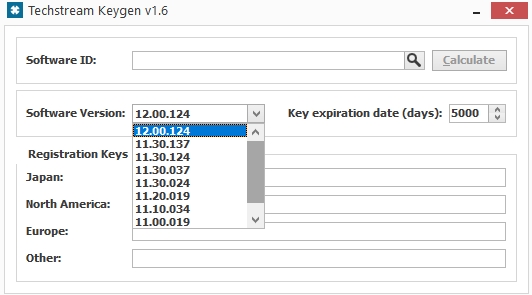Brp Buds Keygen 2015
Diagnostic software (supports BRP vehicle till 2015). BRP MPI-3 Interface (main unit, is used for diagnosis of all BRP vehicles). BRP B.U.D.S.2 Diagnostic software (supports BRP vehicle from 2018 and after). eBay! Very frequently asked questions about which version of BUDS and what equipment use to diagnose vehicles BRP. For the diagnosis of 2-stroke vehicles required: 1. MPI-2 adapter. DESS Post EFI/RFI/DI/4-TEC. 2-stroke cable. License key for B.U.D.S. For the diagnosis of 4-stroke vehicles required: 1. MPI-2 adapter.

Complex engine electronics are easy to understand when you have the right tools. Now, you can solve the mystery of the ' Check Engine Light '. Keep your engine performing at peak efficiency. Diagnose and solve common engine problems and more!
Today’s vehicles are controlled by a Powertrain Control Module - PCM (ECU, ECM), your engine’s computer. If you want to repair or modify your car’s performance, you need a scantool to communicate with the PCM (ECU, ECM).
That bothersome Check Engine Light, the 'Malfunction Indicator Lamp” or 'MIL” for short, is on because your vehicle’s computer self diagnosed a fault that could cause your vehicle’s emissions to increase. It doesn’t necessarily mean your vehicle is polluting – or has a serious problem – but it might. Bosch Wtl 5200 Manual Lawn. So the light is on to let you know something is amiss that needs your attention.
Trouble is, you don’t know WHAT the trouble might be. It might be something and could lead to a break-down or cause expensive engine damage, or it might be something minor. There’s no way to know what the problem is without talking to your vehicle’s computer. How do you do that? By plugging a diagnostic scantool into your vehicle’s diagnostic connector, usually found under the dash near the steering column. These tools unlock the secrets that have turned on your Check Engine Light and tell you the nature of the problem. Yet these tools are only the messenger.
It’s up to you to combine information from the tool with knowledge of how the electronic systems in your engine work to make an accurate diagnosis. This will give you the information you need to understand how to diagnose and repair the most common problems in today’s cars, light trucks and SUVs. Whether you perform the repairs yourself, or use the information to better understand what your mechanic is doing, it pays to understand what is going on. The On-Board Diagnostic System When a fault is detected, the Onboard Diagnostics System (OBDII) records a 'Diagnostic trouble code” (DTC) in the computer’s memory. The code number corresponds to a particular type of fault. The code might not tell you which component has failed or why, but it will tell you which emission control system or sensor circuit the fault is in, or that your engine is misfiring or running rich (too much fuel) or lean (not enough fuel). When a basic code reader is plugged into your vehicle’s diagnostic connector, it will display any diagnostic trouble codes that are found.
The least expensive code readers just give you a number, while the better ones also give you the definition of the code. You can read codes and get an idea of what’s wrong – and you can even clear the codes from the computer’s memory to turn out the MIL lamp (at least temporarily). But a code by itself isn’t the whole story. Take a code P0171 or P0174. Pink Floyd Patch Kurzweil K2500.
These are codes that indicate your engine is running lean. A lean air/fuel mixture can be caused by any number of things, and may cause symptoms such as a rough idle, hesitation or stumble when accelerating, hard starting, a loss of power or an emissions failure. Okay, so your engine is running lean. The next step up the diagnostic ladder is to use a scantool that can actually provide some real diagnostic information beyond basic code numbers. What kind of information we are talking about? Real time sensor data.